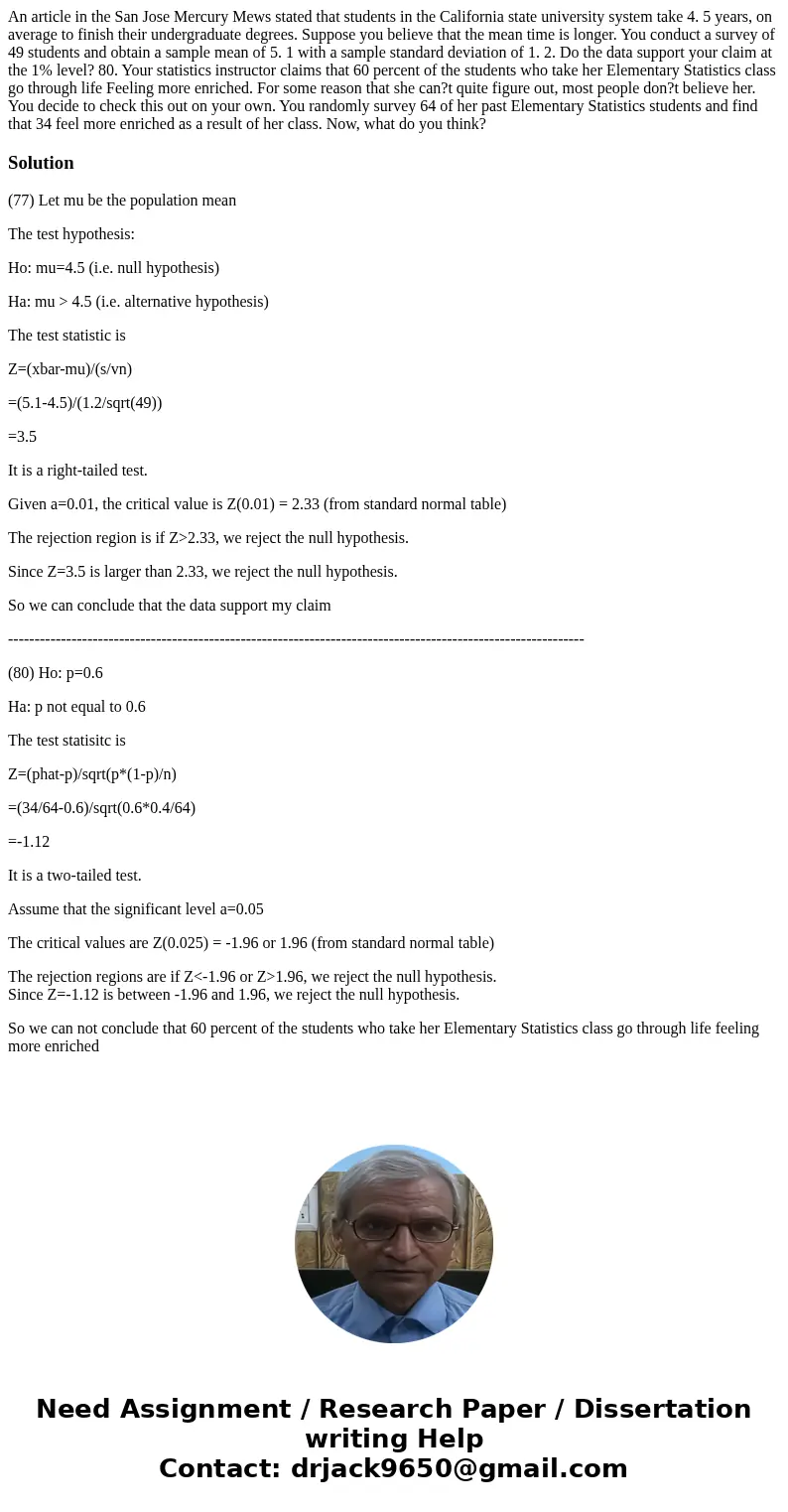An article in the San Jose Mercury Mews stated that students
Solution
(77) Let mu be the population mean
The test hypothesis:
Ho: mu=4.5 (i.e. null hypothesis)
Ha: mu > 4.5 (i.e. alternative hypothesis)
The test statistic is
Z=(xbar-mu)/(s/vn)
=(5.1-4.5)/(1.2/sqrt(49))
=3.5
It is a right-tailed test.
Given a=0.01, the critical value is Z(0.01) = 2.33 (from standard normal table)
The rejection region is if Z>2.33, we reject the null hypothesis.
Since Z=3.5 is larger than 2.33, we reject the null hypothesis.
So we can conclude that the data support my claim
-------------------------------------------------------------------------------------------------------------
(80) Ho: p=0.6
Ha: p not equal to 0.6
The test statisitc is
Z=(phat-p)/sqrt(p*(1-p)/n)
=(34/64-0.6)/sqrt(0.6*0.4/64)
=-1.12
It is a two-tailed test.
Assume that the significant level a=0.05
The critical values are Z(0.025) = -1.96 or 1.96 (from standard normal table)
The rejection regions are if Z<-1.96 or Z>1.96, we reject the null hypothesis.
Since Z=-1.12 is between -1.96 and 1.96, we reject the null hypothesis.
So we can not conclude that 60 percent of the students who take her Elementary Statistics class go through life feeling more enriched

 Homework Sourse
Homework Sourse